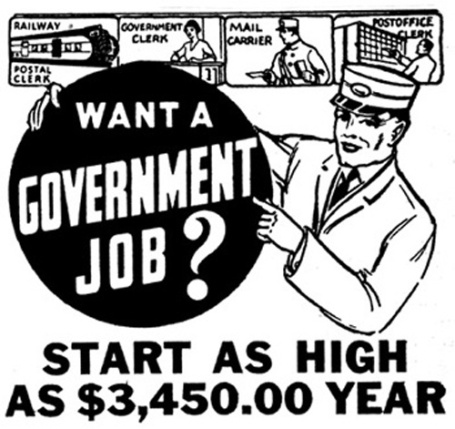Source:- Google.com.pk
Government Jobs in Pakistan, Jobs in Government, Government Jobs in Daily Jang, Nawa e Waqt, Express, Dawn, The Nation, The News, Mashriq, Aaj, Khabrain, Kawish, Daily Pakistan and Ausaf Newspapers, Paperpk Jobs,Newspaper Jobs,Paper Jobs. These Newspapers published in different cities of Pakistan including Islamabad, Rawalpindi, Lahore, Gurjanwala, Peshawar, Quetta, Karachi. No hassle to look tons of newspapers one by one to seach ads, just find here all ads in one place on your PC and Phones.
Jobs in Government Latest 2014
Pakistan Jobs Bank provides you the ease of viewing all Jobs Ads from various sources like Pakistan's leading newspapers Daily Jang, Express, Nawa-i-Waqt, The News, Dawn & The Nation at one single place. Instead of searching the Jobs Advertisements in every newspaper, you can use Pakistan Jobs Bank to find any ad of your interest quickly. We also maintain an archive of older Jobs Advertisements so that you may also view them if they are no longer available to you through the original source. We hope that Pakistan Jobs Bank will help you find your dream job quickly and easily.
The government jobs refers to the part of the economy concerned with providing various government services. The composition of the public sector varies by country, but in most countries the public sector includes such services as the military, police, public transit and care of public roads, public education, along with healthcare and those working for the government itself, such as elected officials. The public sector might provide services that a non-payer cannot be excluded from (such as street lighting), services which benefit all of society rather than just the individual who uses the service.
Businesses and organizations that are not part of the public sector are part of the private sector. The private sector is composed of the business sector, which is intended to earn a profit for the owners of the enterprise, and the voluntary sector, which includes charitable organizations.
Organisation
The organisation of the public sector (public ownership) can take several forms, including:
Direct administration funded through taxation; the delivering organisation generally has no specific requirement to meet commercial success criteria, and production decisions are determined by government.
Publicly owned corporations (in some contexts, especially manufacturing, "state-owned enterprises"); which differ from direct administration in that they have greater commercial freedoms and are expected to operate according to commercial criteria, and production decisions are not generally taken by government (although goals may be set for them by government).
Partial outsourcing (of the scale many businesses do, e.g. for IT services), is considered a public sector model.
A borderline form is as follows**
Complete outsourcing or contracting out, with a privately owned corporation delivering the entire service on behalf of government. This may be considered a mixture of private sector operations with public ownership of assets, although in some forms the private sector's control and/or risk is so great that the service may no longer be considered part of the public sector (Barlow et al., 2010). (See the United Kingdom's Private Finance Initiative.)
Within government jobs are the civil servants. The term civil service can refer to either a branch of governmental service in which individuals are employed (hired) on the basis of professional merit as proven by competitive examinations; or the body of employees in any government agency other than the military.
A civil servant or public servant is a person in the public sector employed for a government department or agency. The extent of civil servants of a state as part of the "civil service" varies from country to country. In the United Kingdom, for instance, only Crown (national government) employees are referred to as civil servants whereas county or city employees are not.
Many consider the study of civil service to be a part of the field of public administration. Workers in "non-departmental public bodies" (sometimes called "QUANGOs") may also be classed as civil servants for the purpose of statistics and possibly for their terms and conditions. Collectively a state's civil servants form its civil service or public service.
An international civil servant or international staff member is a civilian employee that is employed by an intergovernmental organization. These international civil servants do not resort under any national legislation (from which they have immunity of jurisdiction) but are governed by an internal staff regulations. All disputes related to international civil service are brought before special tribunals created by these international organizations such as, for instance, the Administrative Tribunal of the ILO.
Specific referral can be made to the International Civil Service Commission (ICSC) of the United Nations, an independent expert body established by the United Nations General Assembly. Its mandate is to regulate and coordinate the conditions of service of staff in the United Nations common system, while promoting and maintaining high standards in the international civil service.
History
Early history
The Roman civil service in action. Mary and Joseph of Nazareth register for the census before Governor Quirinius, mosaic 1315–20.
Administrative institutions usually grow out of the personal servants of high officials, as in the Roman Empire.
This developed a complex administrative structure, which is outlined in the Notitia Dignitatum and the work of John Lydus, but as far as we know, appointments to it were made entirely by inheritance or patronage and not on merit, and it was also possible for officers to employ other people to carry out their official tasks but continue to draw their salary themselves. There are obvious parallels here with the early bureaucratic structures in modern states where again appointments depended on patronage and were often bought and sold.
Civil service in China
An early meritocratic civil service was established in Imperial China with the implementation of Imperial examinations. The Imperial exam was designed to select the best administrative officials for the state's bureaucracy. This system had a huge influence on both society and culture in Imperial China and was directly responsible for the creation of a class of scholar-bureaucrats irrespective of their family pedigree.
Imperial Civil Service Examination hall with 7500 cells in Guangdong, 1873
Originally, appointments to the bureaucracy were based on the patronage of aristocrats; Emperor Wu of Han started an early form of the imperial examinations, transitioning from inheritance and patronage to merit, in which local officials would select candidates to take part in an examination of the Confucian classics. The system reached its apogee during the Song dynasty.
In theory, the Chinese civil-service system provided one of the major outlets for social mobility in Chinese society, although in practice, due to the time-consuming nature of the study, the examination was generally only taken by sons of the landed gentry. The examination tested the candidate's memorization of the Nine Classics of Confucianism and his ability to compose poetry using fixed and traditional forms and calligraphy. In the late 19th century the system came under increasing internal dissatisfaction, and it was criticized as not reflecting the candidate's ability to govern well, and for giving precedence to style over content and originality of thought. The system was finally abolished by the Qing government in 1905, as part of a package of reforms.
The Chinese system was often admired by European commentators from the 16th century onward.
Modern civil service
In the 18th century, in response to economic changes and the growth of the British Empire, the bureaucracy of institutions such as the Office of Works and the Navy Board greatly expanded. Each had its own system, but in general, staff were appointed through patronage or outright purchase. By the 19th century, it became increasingly clear that these arrangements were falling short. In 1806, the Honourable East India Company established a college, the East India Company College, near London to train and examine administrators of the Company's territories in India. Examinations for the Indian 'civil service'- a term coined by the Company - were introduced in 1829.
British efforts at reform were influenced by the imperial examinations system and meritocratic system of China. Thomas Taylor Meadows, Britain's consul in Guangzhou, China argued in his Desultory Notes on the Government and People of China, published in 1847, that "the long duration of the Chinese empire is solely and altogether owing to the good government which consists in the advancement of men of talent and merit only," and that the British must reform their civil service by making the institution meritocratic.
Charles Trevelyan, an architect of Her Majesty's Civil Service, established in 1855 on his recommendations.
In 1853 the Chancellor of the Exchequer William Gladstone, commissioned Sir Stafford Northcote and Charles Trevelyan to look into the operation and organisation of the Civil Service. The Northcote-Trevelyan Report of 1854 made four principal recommendations: that recruitment should be on the basis of merit determined through competitive examination, that candidates should have a solid general education to enable inter-departmental transfers, that recruits should be graded into a hierarchy and that promotion should be through achievement, rather than 'preferment, patronage or purchase'. It also recommended a clear division between staff responsible for routine ("mechanical") work, and those engaged in policy formulation and implementation in an "administrative" class.
The report was well-timed, because bureaucratic chaos during the Crimean War was causing a clamour for the change. The report's conclusions were immediately implemented, and a permanent, unified and politically neutral civil service was introduced as Her Majesty's Civil Service. A Civil Service Commission was also set up in 1855 to oversee open recruitment and end patronage, and most of the other Northcote-Trevelyan recommendations were implemented over some years.
The same model, the Imperial Civil Service, was implemented in British India from 1858, after the demise of the East India Company's rule in India through the Indian Rebellion of 1857 which came close to toppling British rule in the country.
The Northcote-Trevelyan model remained essentially stable for a hundred years. This was a tribute to its success in removing corruption, delivering public services (even under the stress of two world wars), and responding effectively to political change. It also had a great international influence and was adapted by members of the Commonwealth. The Pendleton Civil Service Reform Act established a modern civil service in the United States, and by the turn of the 20th century almost all Western governments had implemented similar reforms.
Government Jobs Job Application Resume Application Letter Interview Description Application Form Resume Samples Search Cover Letter Photos
Government Jobs Job Application Resume Application Letter Interview Description Application Form Resume Samples Search Cover Letter Photos
Government Jobs Job Application Resume Application Letter Interview Description Application Form Resume Samples Search Cover Letter Photos
Government Jobs Job Application Resume Application Letter Interview Description Application Form Resume Samples Search Cover Letter Photos
Government Jobs Job Application Resume Application Letter Interview Description Application Form Resume Samples Search Cover Letter Photos
Government Jobs Job Application Resume Application Letter Interview Description Application Form Resume Samples Search Cover Letter Photos
Government Jobs Job Application Resume Application Letter Interview Description Application Form Resume Samples Search Cover Letter Photos
Government Jobs Job Application Resume Application Letter Interview Description Application Form Resume Samples Search Cover Letter Photos
Government Jobs Job Application Resume Application Letter Interview Description Application Form Resume Samples Search Cover Letter Photos
Government Jobs Job Application Resume Application Letter Interview Description Application Form Resume Samples Search Cover Letter Photos
Government Jobs Job Application Resume Application Letter Interview Description Application Form Resume Samples Search Cover Letter Photos
Government Jobs Job Application Resume Application Letter Interview Description Application Form Resume Samples Search Cover Letter Photos
Government Jobs Job Application Resume Application Letter Interview Description Application Form Resume Samples Search Cover Letter Photos
Government Jobs Job Application Resume Application Letter Interview Description Application Form Resume Samples Search Cover Letter Photos
Government Jobs Job Application Resume Application Letter Interview Description Application Form Resume Samples Search Cover Letter Photos
Government Jobs Job Application Resume Application Letter Interview Description Application Form Resume Samples Search Cover Letter Photos
Government Jobs Job Application Resume Application Letter Interview Description Application Form Resume Samples Search Cover Letter Photos















Descriptive and useful article better than other similar blogs. October 2018 Calendar
ReplyDelete